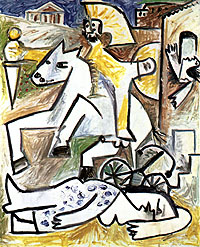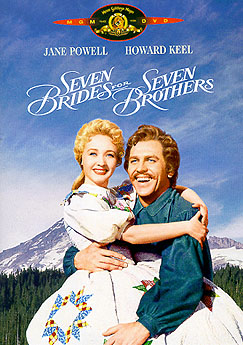
|
|
| |
| |
| |
| |
| |
| |
| |
The Roman state had become strong enough to hold its own in war with all the peoples along its borders, but a shortage of women meant that its greatness was fated to last for a single generation, since there was no prospect of offspring at home nor any prospect of marriage with their neighbours. Then, in accordance with the decision of the senate, Romulus sent messengers to the neighbouring peoples to ask for alliance and the right of marriage for the new people: cities, like everything else, start small but later if their own excellence and the gods assist them, they grow in strength and in fame. It was certain that at the beginning of Rome the gods had been propitiated and that it would not lack in valour. Therefore, men should not disdain to join blood and family ties with other men. | |
| |
| |
| |
But nowhere were the emissaries given a fair hearing. Some scorned, others feared the great power growing in their midst, both for themselves and for their descendants. In more than one place the emissaries were asked, even as they were being sent packing, why they hadn't offered asylum to women (criminals) too: that way they'd have had their marriage and with others of their own rank! The youth of Rome took this insult badly and began to think seriously about the use of force. Romulus, to gain time till he found the right occasion, hid his concern and prepared to celebrate the Consualia, the solemn games in honour of equestrian Neptune. He then ordered that the spectacle be announced to the neighbouring peoples. He gave the event great publicity by the most lavish means possible in those days. Many people came, some simply out of curiosity to see the new city, and especially the nearest neighbours, from Caenina, Crustuminum and Antemnae; the entire Sabine population came, wives and children included. Received with hospitality in the houses, after having seen the position of the city, its walls, and the large number of buildings, they marvelled that Rome had grown so fast. When it was time for the show, and everybody was concentrating on this, a prearranged signal was given and all the Roman youths began to grab the women. Many just snatched the nearest woman to hand, but the most beautiful had already been reserved for the senators and these were escorted to the senators' houses by plebeians who had been given this assignment. The story goes that one woman, far and away the most beautiful, was carried off by the gang of a certain Thalassius, and because many wanted to know where they were taking her, they repeatedly shouted that they were taking her to Thalassius, and that it how the nuptial cry came to be. | |
| |

Pablo Ruiz Picasso, Study for "Rape of the Sabines" (1962), oil on canvas, 73x60cm | |
| |
The party was over, and the grieving parents of the girls ran away, accusing the Romans of having violated the laws of hospitality and invoking the god who was supposed to have been honoured at that day's festival. Nor did the girls themselves hold much hope. But Romulus went among them in person to assure them that none of this would have happened if their fathers hadn't been so inflexible in not letting them marry their neighbours. But now they would have the status of wives with all the material rewards and civil rights of citizenship and they would have children, than which nothing is dearer. They should cool their anger and give their hearts to the men who had already taken their bodies. A good relationship often begins with an offence, he said. And their husbands would treat them with extra kindness in hope of making up for the parents and country they so missed. The men added their blandishments, saying that they'd been motivated by love and passion, entreaties which are very effective with women. | |
| |
"The rape of the Sabine women". Rome, traditionally 8th cent. B.C. (Livy, History of Rome 1.9. Late 1st cent. B.C.-early 1st cent. A.D. L) You can read Ron Koertge's poem about the movie Seven Brides for Seven Brothers in this issue of Jacket. | |
|
|
|